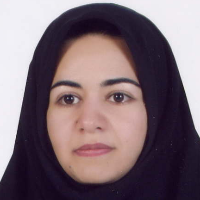Isolation and molecular identification of hydrocarbon-degrading bacteria from soil around Tabriz refinery
Author(s):
Abstract:
Introduction
A wide range of organic chemicals enter into the environment, intentionally or unintentionally, creating public concern. Petroleum hydrocarbons represent one of these organic pollutants threatening various hazards to terrestrial and marine ecosystems. We need cost effective technologies for restoration of contaminated sites, and bioremediation is one the methods which has been used in recent decades. In this method, microrganisms and plants are used to remove, degrade or stabilize pollutants. Biological methods are economically more acceptable than physical and chemical methods. The current study aims to identify the best bacteria for decomposing petroleum hydrocarbons in the soil at Tabriz refinery.Materials And Methods
In this study, oil contaminated soils were collected from a refinery in Tabriz and, in order to identify them, a synthetic Bushnell Haas Mineral Salts medium (BHMS) was used. After the enrichment process, separation and purification were performed. Two strains were selected for molecular identification based on the higher growth in a medium containing crude oil. Molecular identification of the selected strains was conducted after DNA extraction and sequencing of the 16S rRNA gene. The growth of bacteria in both light and heavy diesel was recorded using a spectrophotometer at wavelengths of 560 nm. To assess the production of a biosurfactant, several tests including a drop collapsing test, oil displacement test as well as emulsification activity and cell surface hydrophobicity were performed.Results And Discussion
The sequences obtained were compared with those of the National Center for Biotechnology Information (NCBI). The isolated bacteria with 98% similarity belonged to Pseudomonas aeruginosa and Achromobacter spanius. Both bacteria showed growth in all the three oil components, however,Achromobacter spanius had higher growth rate compared to Pseudomonas aeruginosa. The latter could decompose 67 percent of light diesel in 9 days. Although both bacteria could produce a biosurfactant, Achromobacter spanius had higher hydrophobic cell surface and emulsification activity.Conclusion
In the current study we introduced Achromobacter spanius as an efficient bacterium for the decomposition of heavy and light diesel and crude oil. Based on the results, it is recomended that the ability of the identified bacteria in petroleum contaminated terrestrial and aquatic environments be investigated further.Keywords:
Language:
Persian
Published:
Environmental Sciences, Volume:15 Issue: 2, 2017
Pages:
129 to 140
magiran.com/p1758722
دانلود و مطالعه متن این مقاله با یکی از روشهای زیر امکان پذیر است:
اشتراک شخصی
با عضویت و پرداخت آنلاین حق اشتراک یکساله به مبلغ 1,390,000ريال میتوانید 70 عنوان مطلب دانلود کنید!
اشتراک سازمانی
به کتابخانه دانشگاه یا محل کار خود پیشنهاد کنید تا اشتراک سازمانی این پایگاه را برای دسترسی نامحدود همه کاربران به متن مطالب تهیه نمایند!
توجه!
- حق عضویت دریافتی صرف حمایت از نشریات عضو و نگهداری، تکمیل و توسعه مگیران میشود.
- پرداخت حق اشتراک و دانلود مقالات اجازه بازنشر آن در سایر رسانههای چاپی و دیجیتال را به کاربر نمیدهد.
In order to view content subscription is required
Personal subscription
Subscribe magiran.com for 70 € euros via PayPal and download 70 articles during a year.
Organization subscription
Please contact us to subscribe your university or library for unlimited access!


